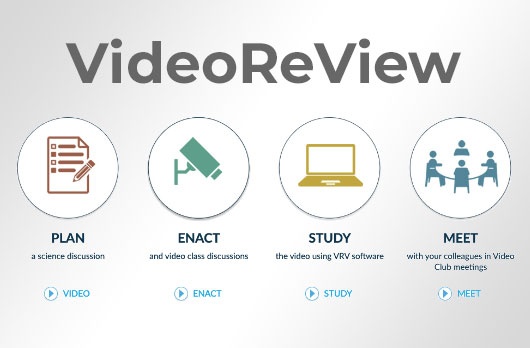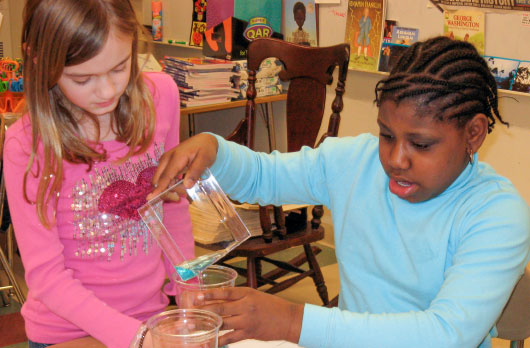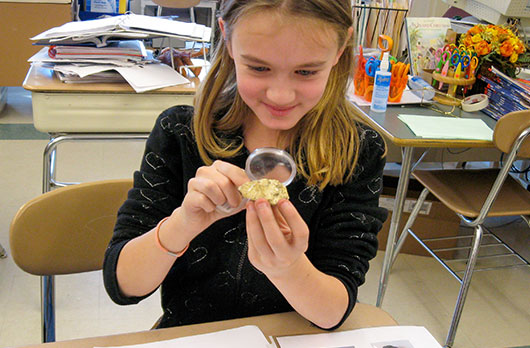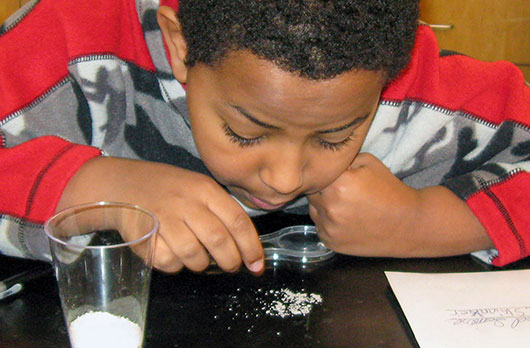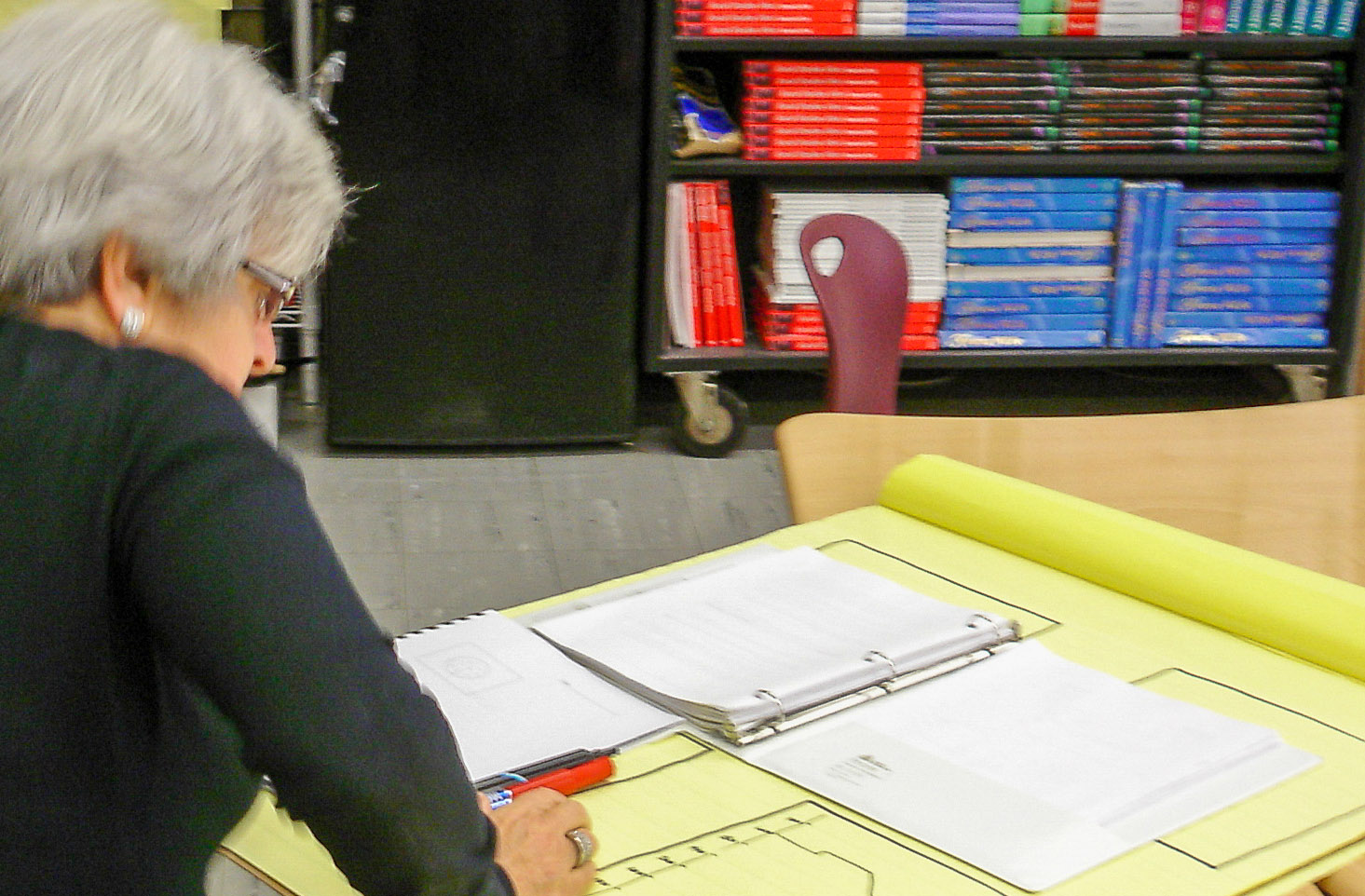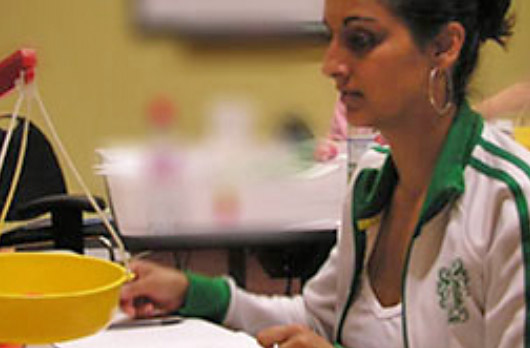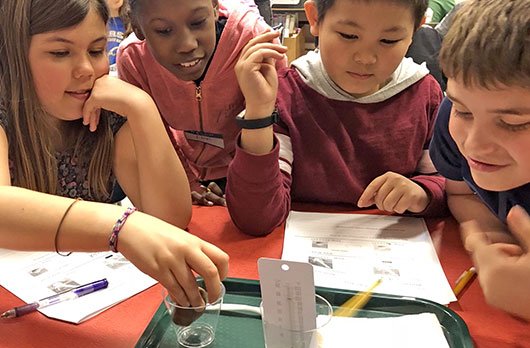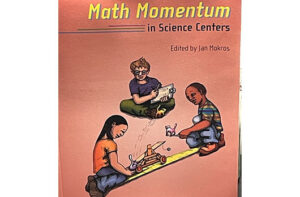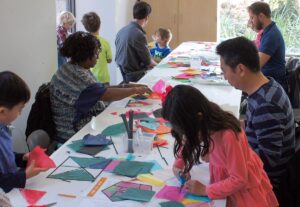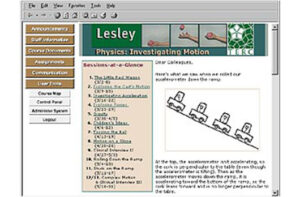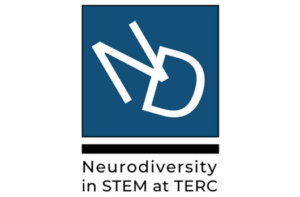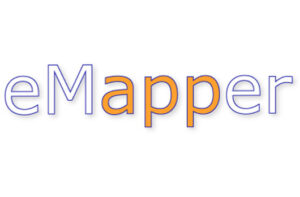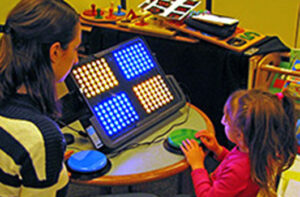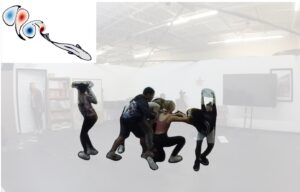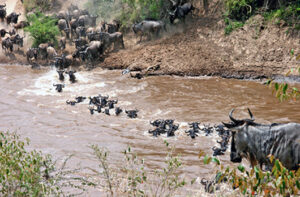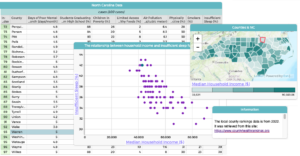VideoReView
Using video technology to see patterns in students’ learning that couldn’t be seen before.
Project Staff:
Sally CrissmanAnushree Bopardikar
Retired TERC Project StaffSummaryEmpowering Teachers Through VideoReView is a NSF funded research and development project to enhance elementary science teachers’ attention to students’ science thinking. The VideoReView program involves teams of teachers in school-based, video-supported professional learning, and a technology to capture and study classroom videos. In the VideoReView program, teachers participate in a four-part sequence: PLAN, ENACT, STUDY, and MEET. First, teachers plan science discussions to lead with their students. Then, they enact the discussions in their classrooms and use a classroom-friendly technology—a camera and software tool—to capture the discussions. Next, teachers use the software tool to study and analyze videos of their science discussions, and to prepare video cases for deeper reflection. Finally, they meet with colleagues in teacher-led Video Clubs to discuss the cases, and to plan next steps in instruction. 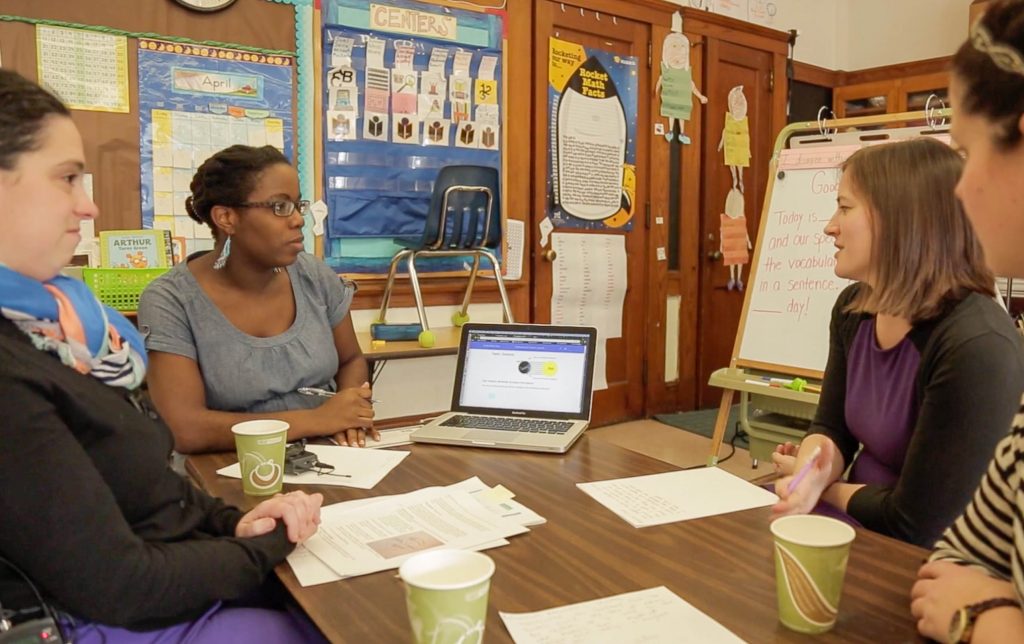
ResearchThe VideoReView research investigates how school-based, video-supported professional learning helps teachers to notice students’ science thinking. The research is based on a theory of change in which teachers videotape science discussions, and then study the video on their own (with a program coach) and with colleagues, with the explicit intent of understanding their students’ ideas and reasoning. This video reflection is hypothesized to increase teachers’ reflection on students’ learning, and teachers are likely to develop new ways of attending, interpreting and deciding how to respond to students’ thinking. Additionally, increased teacher reflection is hypothesized to improve classroom interactions. Changes in teachers’ facilitation and students’ participation in science discussions are expected. Improved teacher reflection and classroom interactions, ultimately, are hypothesized to increase students’ scientific conceptual understandings. Learn More
ImpactThe findings reveal that with supports targeted explicitly at noticing students’ ideas and reasoning about the subject matter, teachers can develop sophisticated skills in attending to and making sense of students’ thinking. Additionally, teachers develop increased inclinations to focus on specific student ideas, thus shifting away from perceiving their students’ understandings as undifferentiated events to identifying specific ideas that lend themselves to further scrutiny. Sharpening their focus on students’ thinking is also accompanied by a greater consideration of science pedagogy as it relates to students’ thinking (during Video Club meetings), and a shift away from thinking about generic pedagogical matters. Finally, teachers adopt an interpretive stance more frequently as they engage in sense-making of students’ ideas (during Video Study meetings with a program coach). Learn More
PublicationsBopardikar, A., Carlson, J., Kimber, E., Loper, S., Pareja Roblin, N., & Rostovtseva, T. (2018). Three design heuristics for enhancing the use of video to improve teaching practice. Educational Designer, 3(10). Bopardikar, A., & Doubler, S. J. (2018). Using Classroom Video and Technology to Blend Teachers’ Learning in Independent and Collegial Contexts. In proceedings of the 13th International Conference of the Learning Sciences (pp.1005-1008), London, UK, June 25-June 27. Castle, C.E. (2018). Measuring multidimensional science learning: Item design, scoring, and psychometric considerations (Student assessments from doctoral dissertation). Boston College, Chestnut Hill, MA.
Empowering Teachers Through VideoReView is a NSF funded research and development project to enhance elementary science teachers’ attention to students’ science thinking. The VideoReView program involves teams of teachers in school-based, video-supported professional learning, and a technology to capture and study classroom videos. In the VideoReView program, teachers participate in a four-part sequence: PLAN, ENACT, STUDY, and MEET. First, teachers plan science discussions to lead with their students. Then, they enact the discussions in their classrooms and use a classroom-friendly technology—a camera and software tool—to capture the discussions. Next, teachers use the software tool to study and analyze videos of their science discussions, and to prepare video cases for deeper reflection. Finally, they meet with colleagues in teacher-led Video Clubs to discuss the cases, and to plan next steps in instruction. 
ResearchThe VideoReView research investigates how school-based, video-supported professional learning helps teachers to notice students’ science thinking. The research is based on a theory of change in which teachers videotape science discussions, and then study the video on their own (with a program coach) and with colleagues, with the explicit intent of understanding their students’ ideas and reasoning. This video reflection is hypothesized to increase teachers’ reflection on students’ learning, and teachers are likely to develop new ways of attending, interpreting and deciding how to respond to students’ thinking. Additionally, increased teacher reflection is hypothesized to improve classroom interactions. Changes in teachers’ facilitation and students’ participation in science discussions are expected. Improved teacher reflection and classroom interactions, ultimately, are hypothesized to increase students’ scientific conceptual understandings. Learn More
ImpactThe findings reveal that with supports targeted explicitly at noticing students’ ideas and reasoning about the subject matter, teachers can develop sophisticated skills in attending to and making sense of students’ thinking. Additionally, teachers develop increased inclinations to focus on specific student ideas, thus shifting away from perceiving their students’ understandings as undifferentiated events to identifying specific ideas that lend themselves to further scrutiny. Sharpening their focus on students’ thinking is also accompanied by a greater consideration of science pedagogy as it relates to students’ thinking (during Video Club meetings), and a shift away from thinking about generic pedagogical matters. Finally, teachers adopt an interpretive stance more frequently as they engage in sense-making of students’ ideas (during Video Study meetings with a program coach). Learn More
PublicationsBopardikar, A., Carlson, J., Kimber, E., Loper, S., Pareja Roblin, N., & Rostovtseva, T. (2018). Three design heuristics for enhancing the use of video to improve teaching practice. Educational Designer, 3(10). Bopardikar, A., & Doubler, S. J. (2018). Using Classroom Video and Technology to Blend Teachers’ Learning in Independent and Collegial Contexts. In proceedings of the 13th International Conference of the Learning Sciences (pp.1005-1008), London, UK, June 25-June 27. Castle, C.E. (2018). Measuring multidimensional science learning: Item design, scoring, and psychometric considerations (Student assessments from doctoral dissertation). Boston College, Chestnut Hill, MA.
The VideoReView research investigates how school-based, video-supported professional learning helps teachers to notice students’ science thinking. The research is based on a theory of change in which teachers videotape science discussions, and then study the video on their own (with a program coach) and with colleagues, with the explicit intent of understanding their students’ ideas and reasoning. This video reflection is hypothesized to increase teachers’ reflection on students’ learning, and teachers are likely to develop new ways of attending, interpreting and deciding how to respond to students’ thinking. Additionally, increased teacher reflection is hypothesized to improve classroom interactions. Changes in teachers’ facilitation and students’ participation in science discussions are expected. Improved teacher reflection and classroom interactions, ultimately, are hypothesized to increase students’ scientific conceptual understandings. Learn More
The findings reveal that with supports targeted explicitly at noticing students’ ideas and reasoning about the subject matter, teachers can develop sophisticated skills in attending to and making sense of students’ thinking. Additionally, teachers develop increased inclinations to focus on specific student ideas, thus shifting away from perceiving their students’ understandings as undifferentiated events to identifying specific ideas that lend themselves to further scrutiny. Sharpening their focus on students’ thinking is also accompanied by a greater consideration of science pedagogy as it relates to students’ thinking (during Video Club meetings), and a shift away from thinking about generic pedagogical matters. Finally, teachers adopt an interpretive stance more frequently as they engage in sense-making of students’ ideas (during Video Study meetings with a program coach). Learn More
PublicationsBopardikar, A., Carlson, J., Kimber, E., Loper, S., Pareja Roblin, N., & Rostovtseva, T. (2018). Three design heuristics for enhancing the use of video to improve teaching practice. Educational Designer, 3(10). Bopardikar, A., & Doubler, S. J. (2018). Using Classroom Video and Technology to Blend Teachers’ Learning in Independent and Collegial Contexts. In proceedings of the 13th International Conference of the Learning Sciences (pp.1005-1008), London, UK, June 25-June 27. Castle, C.E. (2018). Measuring multidimensional science learning: Item design, scoring, and psychometric considerations (Student assessments from doctoral dissertation). Boston College, Chestnut Hill, MA.
Bopardikar, A., Carlson, J., Kimber, E., Loper, S., Pareja Roblin, N., & Rostovtseva, T. (2018). Three design heuristics for enhancing the use of video to improve teaching practice. Educational Designer, 3(10). Bopardikar, A., & Doubler, S. J. (2018). Using Classroom Video and Technology to Blend Teachers’ Learning in Independent and Collegial Contexts. In proceedings of the 13th International Conference of the Learning Sciences (pp.1005-1008), London, UK, June 25-June 27. Castle, C.E. (2018). Measuring multidimensional science learning: Item design, scoring, and psychometric considerations (Student assessments from doctoral dissertation). Boston College, Chestnut Hill, MA.
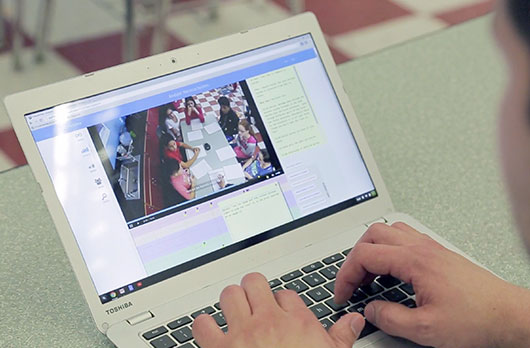
Funder:
National Science Foundation
Award Number:
1415898
Clark University Tufts University Education Development Center
Share This Page:
